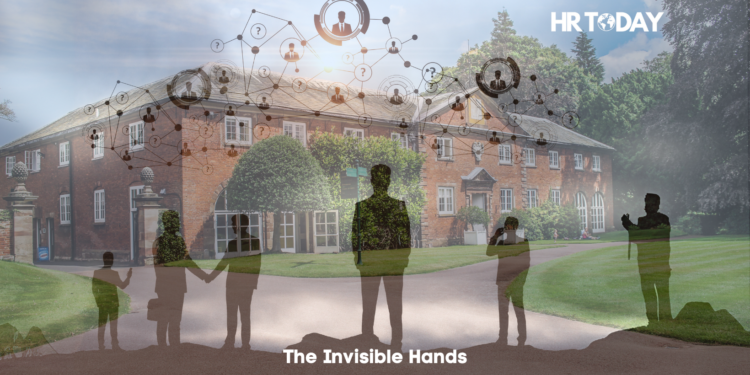Introduction: The Rise of Invisible Alliances
In a world fractured by geopolitical rifts, trade wars, and economic volatility, the rise to leadership no longer depends solely on academic excellence or institutional prestige. An invisible force—one not listed on résumés or captured in KPIs—is playing a transformative role: the strength of an institution’s alumni network.
This paper explores how institutions with powerful, trust-based alumni networks produce a disproportionately higher number of CEOs, startup founders, and senior business leaders, and what this means for leadership pipelines, HR strategy, and entrepreneurial ecosystems. Drawing from Ivy League research, global datasets, and leadership case studies, we uncover why these networks matter, how they function, and what organizations, HR leaders, and educational institutions can do to nurture this competitive edge.
Anatomy of an Invisible Advantage
While elite institutions are often praised for their faculty, infrastructure, or brand name, their real differentiator lies in the informal trust economies built among alumni. These networks go beyond reunion dinners or WhatsApp groups—they are engines of capital flow, co-founder selection, mentoring, early customer acquisition, and reputation building.
What makes them so powerful?
- Implicit Trust and Shared Norms
Graduates from the same institution often operate on shared value systems and mutual credibility, reducing the friction in decision-making and collaboration. - Asymmetric Support
In the strongest alumni networks, support is extended without solicitation. The senior doesn’t wait for the junior to ask. Warm intros, early capital, vendor references—these happen silently, yet powerfully. - Global Embeddedness
Strong alumni ecosystems are not geographically confined. They operate across borders, leveraging institutional brand equity on a global scale. - Multi-Layered Reciprocity
Giving back isn’t transactional. Today’s mentee becomes tomorrow’s mentor. This layered reciprocity creates a self-sustaining support system.
The 7 Fundamentals of a CEO-Producing Alumni Network
Through case studies from institutions like Harvard Business School, IIT Bombay, INSEAD, Stanford, and IIM Ahmedabad, we identified seven key features of alumni ecosystems that routinely launch C-suite leaders and founders:
1. Structured Mentoring Pipelines
Mentorship isn’t left to chance. These networks proactively pair experienced leaders with emerging professionals and founders across sectors.
2. Alumni-Led Investment Syndicates
Alumni form angel networks and syndicates to fund startups founded by their peers or juniors, with examples like Stanford Angels or the IIT Startups network.
3. High-Trust Co-Founder Selection
Founders often choose co-founders from their alma mater, knowing that shared roots reduce risk. Research by HBS (2022) suggests startups with alumni co-founders from elite institutions have a 34% higher Series A conversion rate.
4. Deep Backchannel Market Access
From vendor referrals to client intros, alumni become the soft-entry point into difficult markets.
5. Alumni-Led Leadership Bootcamps
Institutions like Wharton and INSEAD run alumni-designed bootcamps to prepare emerging leaders with real-world challenges and boardroom readiness.
6. Invisible Boards and Informal Advisors
Behind many CEOs stands an informal board of alumni who review decks, refine pitches, and rehearse negotiations.
7. Trust-Based Emotional Anchoring
The journey of leadership is often lonely. Strong alumni ecosystems provide the psychological safety needed to absorb setbacks and navigate dilemmas.
Real-World Validation: What the Data Shows
In a landmark 2025 study published by the Global Leadership Observatory, researchers found that:
- 42% of Fortune 500 CEOs in the last decade came from 20 institutions, with Harvard, Stanford, MIT, IIT Delhi, IIM Ahmedabad, and INSEAD dominating the list.
- 78% of Indian unicorn startup founders in the last five years had co-founders from the same college or institutional network.
- 91% of early-stage angel funding rounds in the US and India involved at least one alumni link between founders and funders.
A similar pattern was observed in startup accelerators. In Y Combinator’s 2024 cohort, 55% of selected startups had at least one founder from an institution with a known alumni investment syndicate.
Implications for HR and Organizational Strategy
1. Hire from Networked Ecosystems, Not Just Elite Colleges
When hiring CXOs or founders-in-residence, evaluate not just the institution but its alumni influence quotient (AIQ)—a new metric that can predict future capital, visibility, and support.
2. Formalize Alumni-Led Onboarding and Coaching
If you’re hiring from such ecosystems, enable onboarding buddies, coach circles, and shadow boards from the same alumni pool.
3. Create Your Own Internal Alumni Network Culture
Mimic the practices: internal mentorship networks, cohort-based bootcamps, and senior-junior sponsorship programs.
4. Partner with Alumni-Led VC Firms and Accelerators
Especially for corporate ventures, tie-ups with alumni-led VCs can create powerful deal flows and early adoption pipelines.
Beyond Institutions: The Psychological Safety of Belonging
There’s something deeply human about the best alumni ecosystems: they give us the feeling of being known, even when we’re not in the room. It is this sense of invisible solidarity, this whisper of belonging, that allows leaders to leap into the unknown and create value not just for themselves—but for entire industries.
Build the Network Before You Need It
A strong alumni network isn’t just a by-product of a good college—it is an institution within the institution, an outcome of culture, norms, and intent. Whether you’re a university dean, HR leader, founder, or policy maker, ask yourself:
Are you investing enough in the invisible infrastructure that builds the next generation of visible leaders?
References
- Stanford Angels & Entrepreneurs. (2023). Impact of Alumni Investment Networks. Palo Alto, CA.
- Harvard Business School. (2022). The Alumni Co-Founder Effect: Startup Outcomes and Shared Institutional Roots. Boston, MA: Harvard Publishing.
- Global Leadership Observatory. (2025). CEOs and Their Alma Maters: Institutional Networks and Leadership Pipelines. Geneva: GLO Reports.
- Y Combinator. (2024). Cohort Composition Report. San Francisco, CA.
Read Also : When HR “Produces Nothing”: A Response to Jennifer Sey’s Anti-HR Vision
The Fine Balance: Navigating Work, Life, and Mental Wellbeing
Mind the Leadership Gap – From Learning to Real-World Impact
How the Adecco Group is empowering its employees for the future of work













